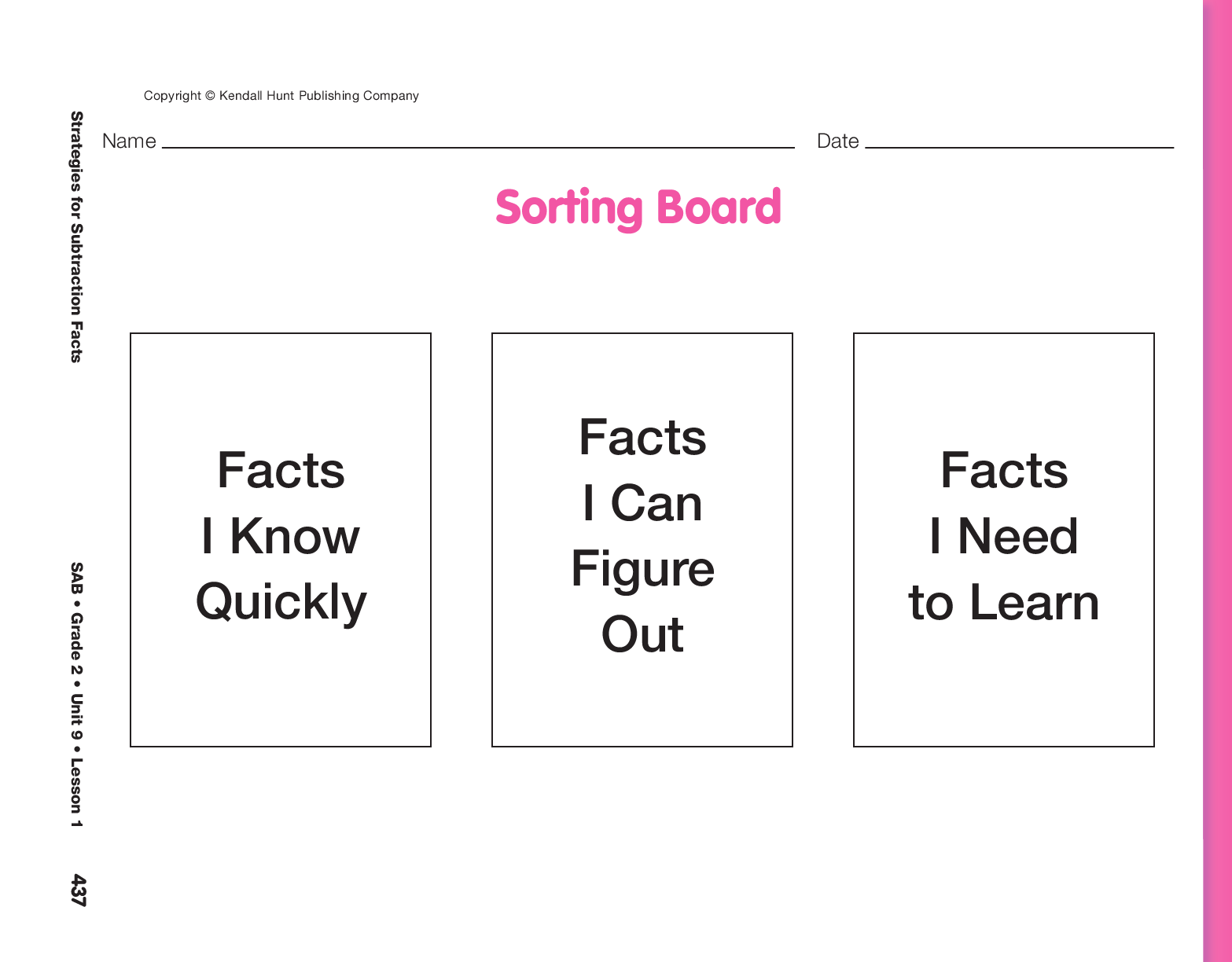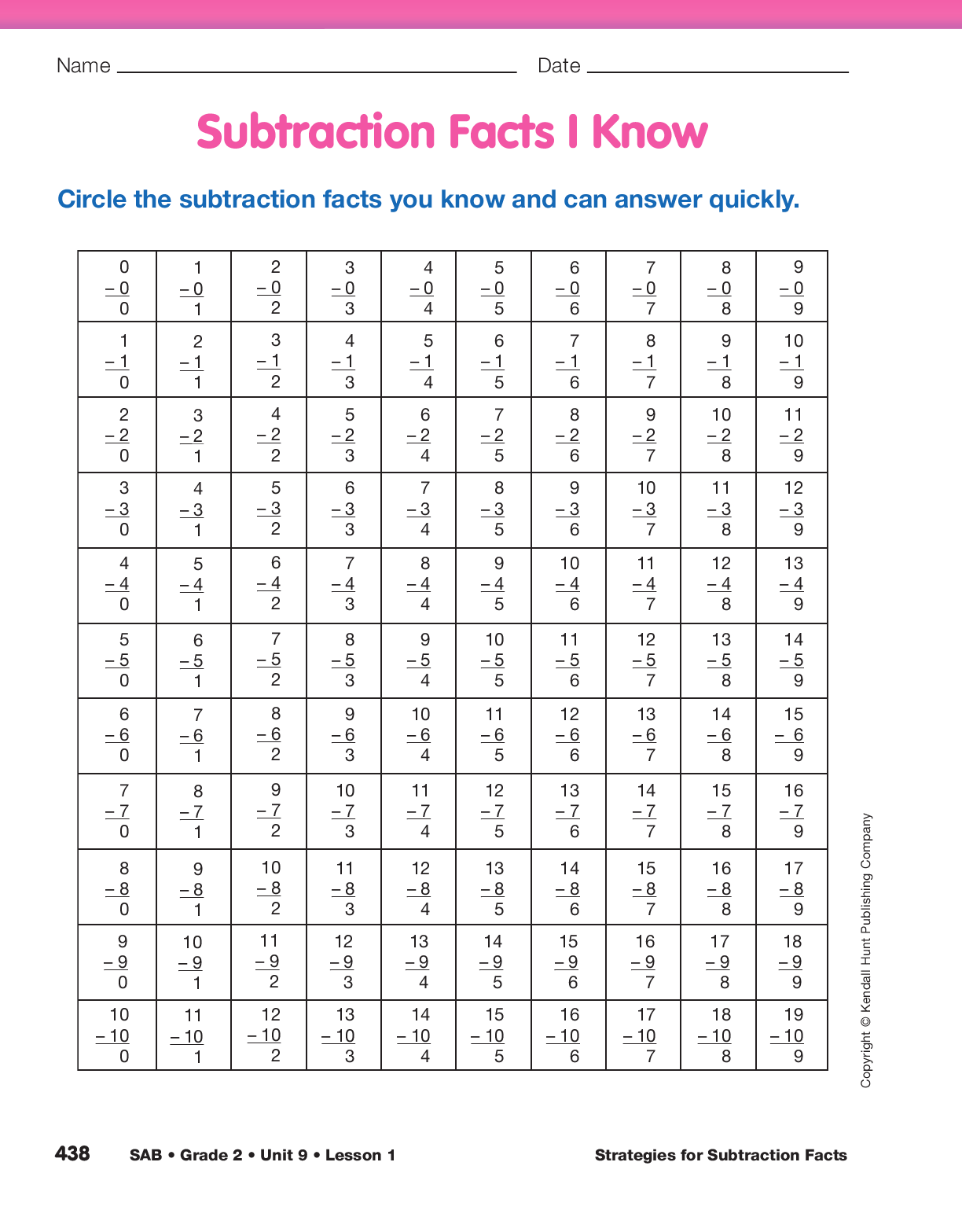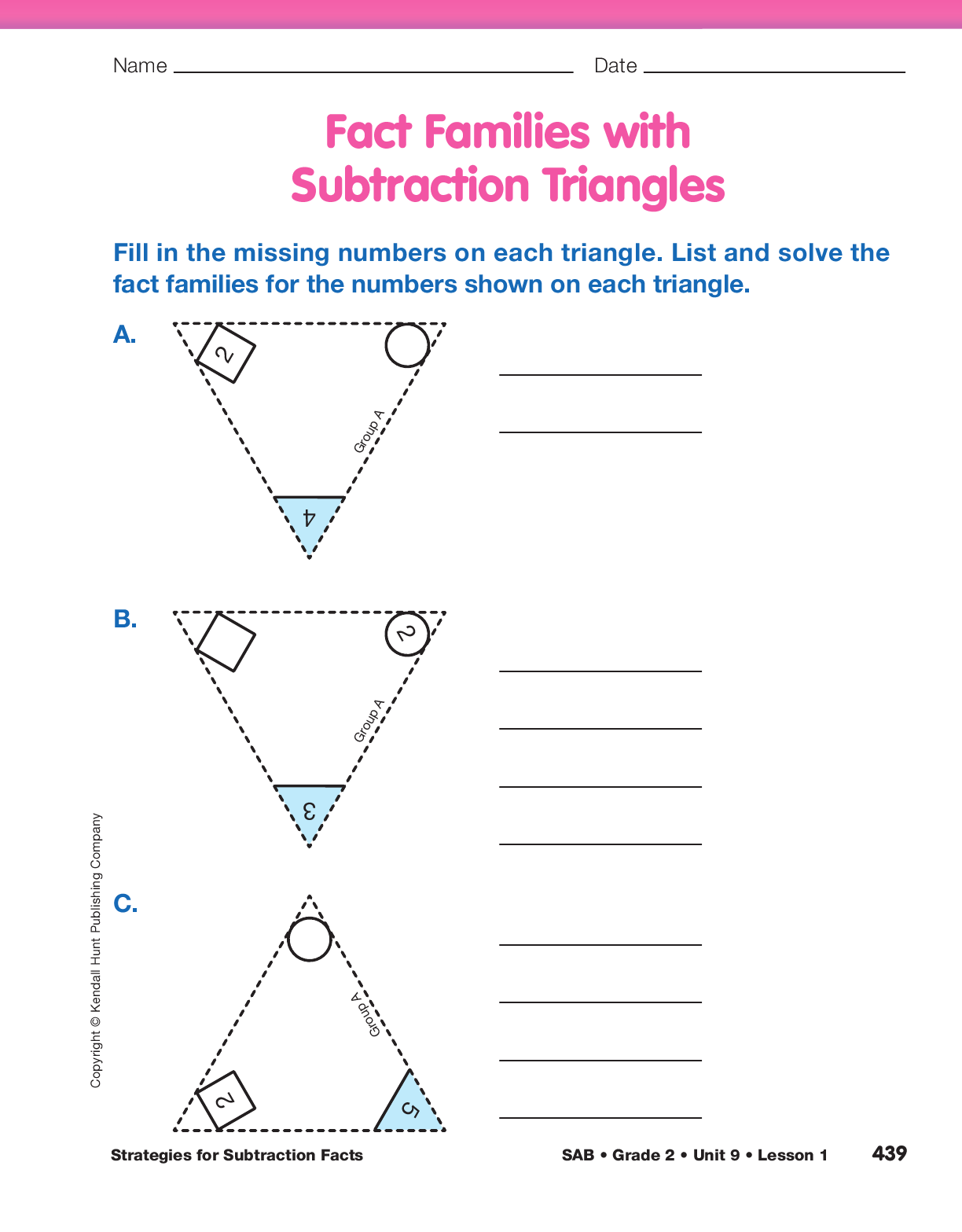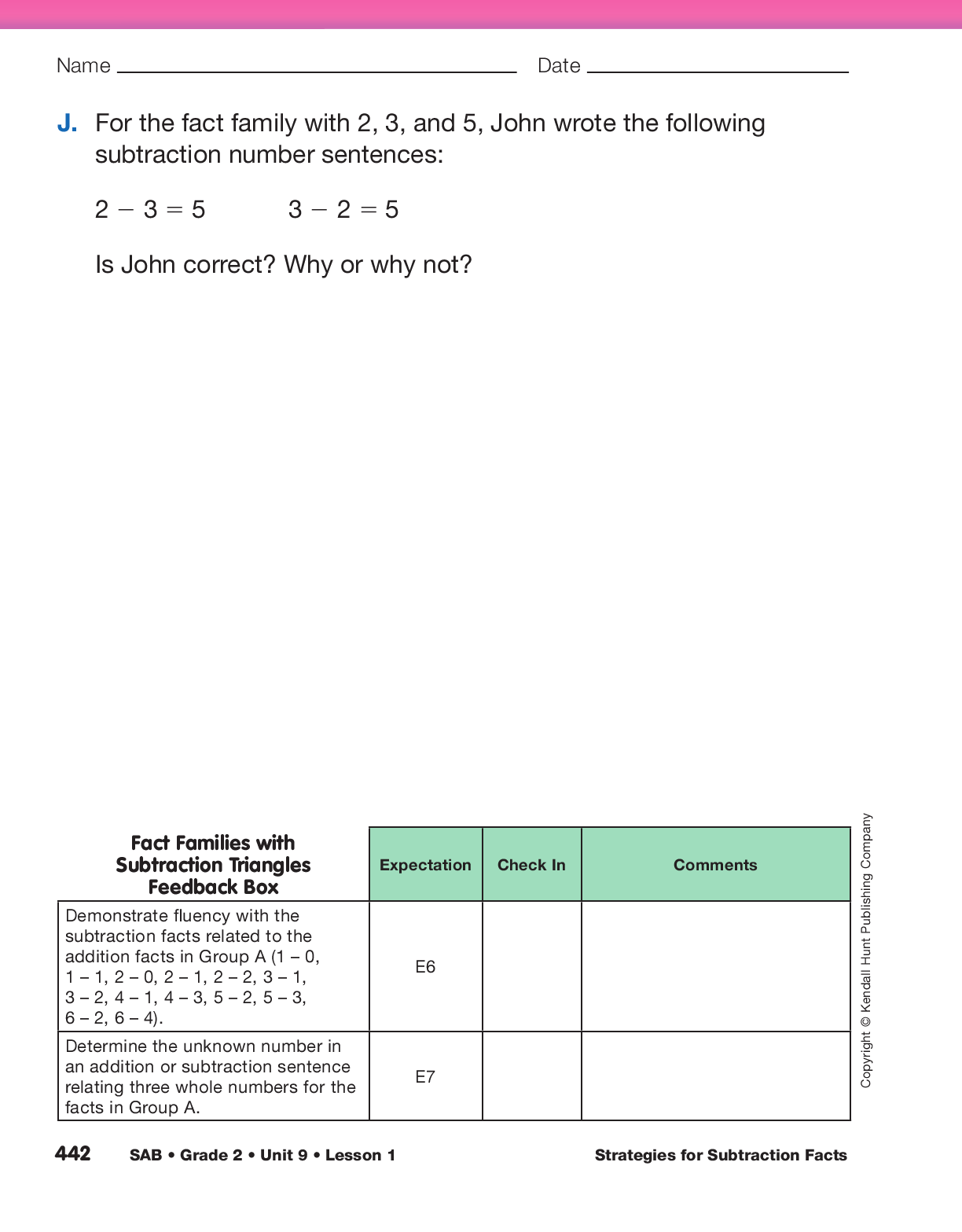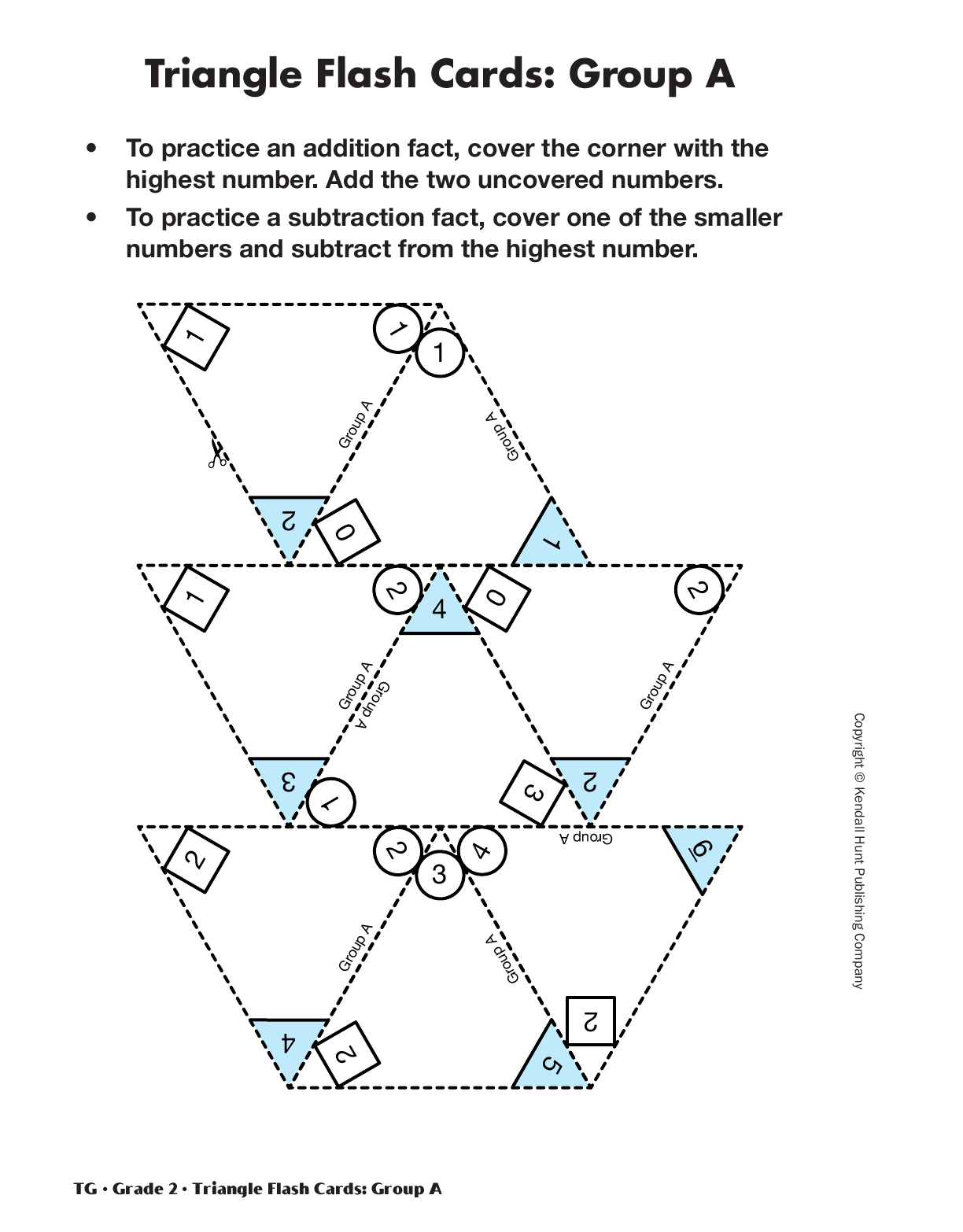Strategies for Subtraction Facts
Est. Class Sessions: 2–3Developing the Lesson
Part 2: Introduce the Triangle Flash Cards for Subtraction
Demonstrate Using Triangle Flash Cards for Subtraction.
Display the
Large Triangle Flash Card
Master to introduce how to use the triangle flash
cards for subtraction. Write 4 in the circle, 2 in the
square, and 6 in the shaded corner. See Figure 5.
Ask a student to review how the cards are used to
practice addition facts. Have another student record
the appropriate number sentences on the board
(4 + 2 = 6,
2 + 4 = 6). Repeat this a few times with
other addition facts.
Next, ask how the same card might be used to practice
subtraction facts. Some students may suggest
beginning with the sum and covering one of the
other corners, resulting in a subtraction problem.
Talk with students about how the number sentence
might be recorded. For example, if there is a 3 in the
circle, a 1 in the square, and a 4 in the third corner,
the subtraction sentences can be 4 − 3 = 1 (covering
the 1) or
4 − 1 = 3 (covering the 3). If students
do not suggest a way to use the cards, demonstrate
this for them.
Ask:
Remind students that the subtraction facts are related to the addition facts. We call the four related facts a fact family. Ask a student to tell you a number sentence using the numbers 4, 1, and 5. Write the sentence on a display.
Ask:
Continue until all four number sentences are written for the students to see.
After each sentence is given, ask:
Choose three different numbers and repeat the conversation.
Then choose numbers such as 2, 2, and 4.
Ask:
Sort Triangle Flash Cards. Distribute a copy of the Triangle Flash Cards: Group A to every student and ask them to cut out the cards. After the cards are cut out, have students work in pairs to practice the subtraction facts. Explain the steps for students to sort their flash cards:
- One partner chooses a flash card and covers the corner with a number in the circle. This number is the answer to a subtraction fact.
- The other partner uses the two visible numbers to solve a subtraction fact and says the resulting subtraction sentence.
- As the students work through the cards, they use the Sorting Board to divide the cards into three piles: “Facts I Know Quickly,” “Facts I Can Figure Out,” and “Facts I Need to Learn.”
- If a student gives the correct answer quickly, the card is placed in the “Facts I Know Quickly” pile. If the student answers correctly after thinking through a strategy, it is placed in the “Facts I Can Figure Out” pile. If the student gives the incorrect answer, it is placed in the “Facts I Need to Learn” pile.
- The student displaying the flash cards helps his or her partner find the facts from the “Facts I Know Quickly“ pile on his or her Subtraction Facts I Know chart so he or she can circle the known facts easily.
- Students place the cards in one pile and go through the same steps again, this time covering the numbers in the squares. After the facts that the student knows quickly are circled on the Subtraction Facts I Know chart, the cards can be clipped together and placed in an envelope for storage.
- Partners switch roles and repeat the procedure.
Complete the lesson by discussing students’ strategies for learning the facts. Include how knowing an addition fact helps in learning a subtraction fact.
Use the Fact Families with Subtraction Triangles pages in the Student Activity Book to assess students’ fluency with the subtraction facts for Group A.















